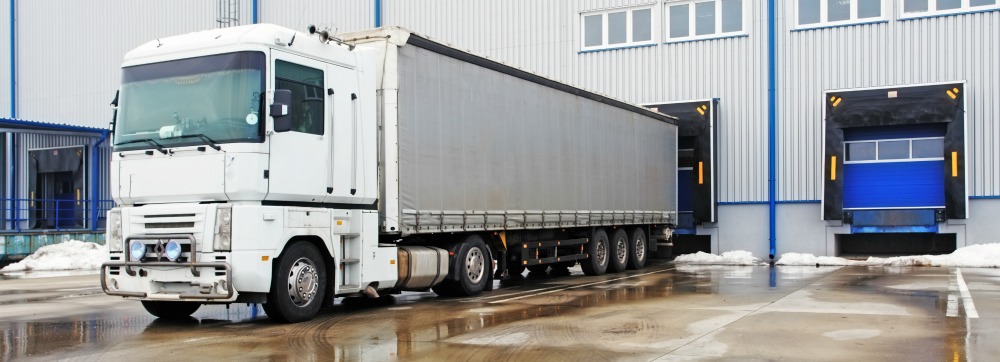FSMA’s Sanitary Transportation Rule: Q&A with Industry Experts

Companies with more than $500,000 in annual revenue must now comply with FSMA’s Sanitary Transportation of Human and Animal Food Rule. Samantha Cooper, Senior Manager of Food Safety and Quality Assurance at the Grocery Manufacturers Association and Laura Dunn Nelson, Alchemy’s Vice President of Food Safety & Global Alliances, explained the rule’s requirements on Alchemy’s recent webinar. Below, Samantha and Laura answer some of your additional questions regarding the Sanitary Transportation Rule.
Q. How much of the Sanitary Transportation Rule applies if all final product and ingredients are shipped in fully enclosed packages or buckets?
Cooper: Transportation of food completely enclosed by a container is exempt from the rule, unless the food requires temperature control for safety. If the final product and ingredients within the fully enclosed packages or buckets do not require temperature control for safety and are just refrigerated for quality reasons or perhaps shelf stability, they would be exempt from the rule. Note that even if products are exempt from the rule, all parties are subject to the general food safety requirements of the Federal Food, Drug, and Cosmetic Act.
Q. How can I ensure shippers and carriers are communicating consistently and effectively?
Nelson: Verifying that the shippers and carriers have accepted their respective requirements per the Sanitary Transportation Rule is important – especially based on the complexity of these relationships and the various waivers and exceptions to the rule. These requirements (for example, sanitary specifications of the carrier’s vehicle) must be provided in writing so that these accountabilities can be documented and shared. Additionally, written procedures must be implemented to document compliance to these requirements (for example, cleaning procedures of vehicles and equipment). A best practice approach would be to set up an audit of these written requirements, procedures, and compliance records on a periodic basis.
Q. Should the temperature documentation for the entire duration of every single temperature controlled shipment be saved and attached to shipment documents?
Cooper: There is no requirement to maintain records of each individual shipment. However, shippers, carriers, and receivers may want to retain such records for business purposes. In the preamble to the rule, FDA explains that they are “not looking for carriers to fill up some room with time-temperature strip chart recordings for every load.” If requested by the shipper or receiver, a carrier must demonstrate that it has maintained temperature conditions consistent with the temperature specified by the shipper. This can be demonstrated by agreed method between the shipper and carrier, such as time/temperature data collected during the shipment or the temperature upon loading and unloading.
Q. What is the best way to ensure drivers are receiving the necessary training that the rule requires?
Nelson: Verifying driver training can be achieved in two ways: 1) reviewing driver training records as specified by the rule (§ 1.912) and 2) interviewing the driver. Drivers should have an awareness of potential food safety problems that could occur, an understanding of basic sanitary practices to address those potential problems, and demonstrate acknowledgement of their responsibilities under the rule (§ 1.910). A short interview with the driver to engage them on their level of understanding in these areas will help to identify any training deficiencies.
Q. What are industry best practices for transporting multiple allergens within one shipment?
Cooper: Receiving procedures for trailer inspections before loading and unloading are good times to look for signs of a previous shipment that could lead to cross-contact, in addition to observations of proper loading of allergen and non-allergen foods. Pallets of foods containing allergens should not be stacked on top of non-allergen pallets. Allergen management during transportation operations may also depend on whether the food is completely enclosed in a container or not, thus requiring more segregation, isolation, or use of other protective measures to prevent cross-contact.
Q. How can I identify gaps in my food safety protocols with regard to drivers?
Nelson: First, it is certainly appropriate to include your product transportation/logistics process in your assessment of your food safety program effectiveness. One of the biggest potential gaps may be what drivers need to do when faced with an unexpected event (for example, reefer unit failure). Using scenario-based ‘what if’ discussions to verify your drivers’ clear understanding of their routine job tasks around food safety AND their understanding of what is expected in non-routine events is a good way to tease out the potential gaps in their knowledge. It is also important to use future non-routine events as learning opportunities to share within your organization – what went well, opportunities for improvement – in the spirit of continuous improvement. Finally, sometimes just asking the drivers for their help, based on their vast experiences, in identifying gaps will provide a wealth of information!
Stay up-to-date on all the latest food industry rules and regulations by subscribing to The Feed today!






